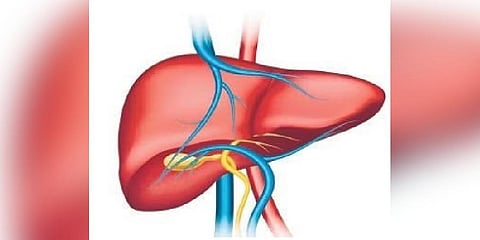

Around 3,000 liver transplants are performed annually in India. Speaking with Kavita Bajeli-Datt, Dr. Arvinder Singh Soin, Chairman of the Institute of Liver Transplantation and Regenerative Medicine, Medanta, Gurugram, said that the number of liver transplants has been steadily increasing due to many reasons, including advancements in medical technology.
Why is there a lack of awareness about donation after brain death or cadaveric donation?
The lack of awareness about cadaveric organ donation can be attributed to various factors, including the absence of comprehensive government campaigns, limited media coverage, insufficient community outreach efforts, cultural beliefs, the lack of prominent figures advocating for organ donation, religious and ethical concerns that may discourage discussions, misconceptions about the process, logistical challenges in registering as a donor, lack of accessible information in multiple languages, and the shortage of healthcare professionals actively engaging in conversations about organ donation.
Additionally, the inadequate incorporation of education and awareness programs within educational institutions further contributes to this lack of awareness among the general population.
What are the misconceptions surrounding the practice?
Misconceptions surrounding organ donation include the belief that certain religions prohibit cadaveric organ donation and transplantation, even though many religious authorities endorse the practice. Another misconception is that the wealthy receive preferential treatment on transplant waiting lists when, in fact, organ allocation is based on medical criteria such as severity of illness and time spent on the waiting list, ensuring a fair and transparent system for all individuals in need.
Additionally, there is a misconception that the donor’s body may get disfigured in donation after brain death, which is entirely untrue. An operation removes internal organs, the incision to remove them is closed neatly, and the body’s external appearance is fully preserved.
What are the infrastructure’s limitations concerning organ donation?
Infrastructural limitations in organ donation are multifaceted. For example, in scenarios such as accidents, the lack of well-equipped hospital facilities and transportation systems can hinder the timely transfer of potential donors to appropriate medical facilities. Many institutions have basic ICU facilities but not the infrastructure or the expertise for transplants. Such centers should be developed into non-transplant organ retrieval centers as conceptualized in the Human Organ Transplantation Act.
How many liver transplants are performed in India?
In India, around 3,000 liver transplants are performed annually. It is rising. This reflects this complex procedure’s growing importance and success in curing terminal liver disease and cancer and saving lives. This number has been steadily increasing due to several factors, including advancements in medical technology, increased expertise of transplant teams, and an expansion of the pool of potential donors, including living donors.
However, it’s essential to note that the demand for liver transplants far exceeds the supply of available organs, leading to long waiting lists for patients needing this life-saving procedure. To bridge this gap, there is a continuous effort to raise awareness about organ donation after brain death, and the safety of living donation, improve infrastructure, and streamline the organ allocation process, all of which are crucial steps to enhance the success and accessibility of liver transplants in India.
What is the quality of life for a liver donor post-transplant?
The quality of life for a liver donor post-transplant is excellent. Donors who have contributed a portion of their liver for transplantation can lead fulfilling lives. Technological advancements, such as robotic surgery, have further improved post-transplant outcomes, ensuring a relatively painless recovery of hidden small scars and enhanced quality of life.
Additionally, comprehensive preoperative evaluations ensure that donors are in good health and suitable for the procedure, minimizing risks. The healthcare providers offer robust post-operative care and support to ensure the donor’s physical and emotional well-being throughout their recovery. Liver donors have comparable life expectancy and overall health to the general population, providing further reassurance about the positive impact of liver donation on donors’ quality of life.
What can be done to improve the organ donation situation in India?
Several steps can be taken to improve the organ donations in India. Firstly, government initiatives, including nationwide campaigns and policies, can raise awareness and encourage organ donation. Secondly, integrating education about organ donation within educational institutions will help dispel misconceptions and foster a culture of donation from an early age.
Thirdly, disseminating accurate and informative content through various media channels can further contribute to public awareness and understanding of organ donation, thus addressing the existing gaps in knowledge and promoting a positive attitude towards this life-saving practice.